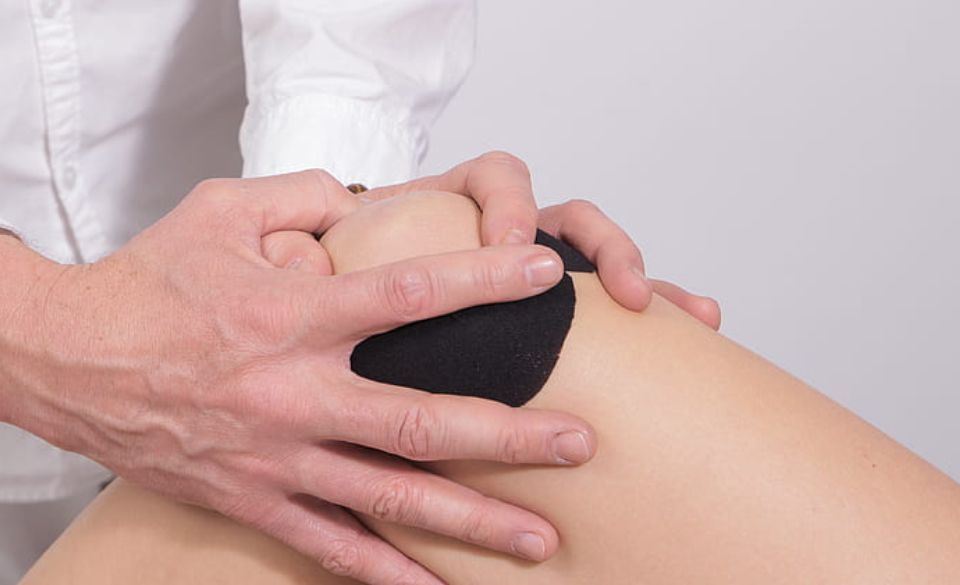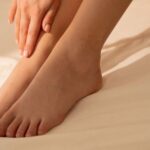
Natural Home Remedies for Knee Pain
Page Contents
- 1. Evaluating Your Pain
- 2. The RICE Method for Strains and Sprains
- 3. Tai Chi for Improved Mobility
- 4. The Significance of Regular Exercise
- 5. Weight Management and Its Impact
- 6. Utilizing Heat and Cold Therapy
- 7. Herbal Ointments and Their Effectiveness
- 8. Exploring Willow Bark and Ginger Extracts
- Final Words – Natural Home Remedies for Knee Pain
Knee pain, a common ailment affecting individuals of various ages, can be a bothersome and limiting condition. Fortunately, many people turn to the convenience of home remedies to alleviate this discomfort. Among these remedies, techniques such as icing, compression, and specific exercises are often recommended for their effectiveness in providing relief. However, it’s crucial to tread cautiously, as certain traditional home remedies may not only be ineffective but also potentially harmful, exacerbating the issue rather than resolving it. In this article, we will explore both the tried-and-true methods for addressing knee pain at home and the potential pitfalls associated with traditional treatments, offering insights to help you make informed decisions in managing and eliminating knee pain.
1. Evaluating Your Pain
If you find yourself grappling with mild to moderate knee pain, the first step is to assess its underlying cause. Whether it’s linked to inflammation, arthritis, or a minor injury, understanding the root issue is crucial. In many cases, pain stemming from these factors may resolve naturally without the need for medical intervention. Home remedies can offer relief and symptom management. However, if the pain is moderate to severe, or if symptoms persist or worsen, it is advisable to seek professional medical attention for a comprehensive evaluation.
2. The RICE Method for Strains and Sprains
For those experiencing knee pain due to a twist, fall, or strain, the RICE acronym is a helpful guideline:
Rest: Give your knee some time to recover.
Ice: Apply a cold compress, like a bag of ice or frozen vegetables, to the affected area to reduce swelling.
Compression: Wrap your knee with a compression bandage to prevent excessive swelling without restricting circulation.
Elevation: Elevate your leg while resting to further reduce swelling.
3. Tai Chi for Improved Mobility
Tai chi, an ancient Chinese mind-body exercise, has gained recognition for its potential benefits in improving balance and flexibility. Research indicates that it can be particularly advantageous for individuals with osteoarthritis (OA). As recommended by leading organizations, such as the American College of Rheumatology and Arthritis Foundation, tai chi can help reduce knee pain, enhance range of motion, and promote relaxation, ultimately aiding in stress management.
4. The Significance of Regular Exercise
Regular exercise plays a pivotal role in maintaining knee health, especially for those dealing with conditions like OA. While it’s essential to rest during acute pain or injury, prolonged inactivity may lead to joint stiffness and hinder recovery. For individuals with OA, collaborating with a partner, such as a personal trainer or exercise buddy, can be highly beneficial. Engaging in low-impact activities like cycling, walking, swimming, or participating in tai chi or yoga can help manage knee pain. Consulting a healthcare professional or physical therapist is recommended to design a personalized exercise program tailored to your specific needs and to adapt it as your condition changes.
5. Weight Management and Its Impact
Carrying excess weight can exert significant pressure on knee joints. Research suggests that each additional 10 pounds of body weight can translate to a substantial increase in joint pressure. Furthermore, obesity is often associated with inflammation, potentially exacerbating knee pain and joint issues. For individuals dealing with long-term health problems contributing to knee pain, weight management can be an effective strategy to alleviate symptoms and reduce pressure on the knees. Consult with your healthcare provider to establish a target weight and develop a personalized plan, encompassing dietary modifications and exercise.
6. Utilizing Heat and Cold Therapy
Heat and cold therapy can offer relief from knee pain. These methods involve alternating between heat and cold applications, applying heat for up to 20 minutes at a time, and using cold pads for the first 2 days after an injury. Never apply ice directly to the skin, and ensure that heating pads are not too hot before use. Additionally, consider warm showers or baths to alleviate morning joint stiffness. For those seeking alternative solutions, paraffin and ointments containing capsaicin can be used for heat and cold therapy.
7. Herbal Ointments and Their Effectiveness
Some individuals turn to herbal ointments as a means of pain relief. In one study, a salve made from cinnamon, ginger, mastic, and sesame oil demonstrated pain-relieving effects comparable to over-the-counter arthritis creams. While some individuals find herbal remedies effective, the evidence supporting their impact on knee pain remains inconclusive. As a precaution, it is advisable to consult with a medical professional or pharmacist before considering any herbal therapy.
8. Exploring Willow Bark and Ginger Extracts
Willow bark extract is occasionally used to alleviate joint pain, with some individuals reporting pain and inflammation relief. However, scientific studies have not consistently confirmed its effectiveness. Furthermore, there may be safety concerns, particularly for individuals with specific medical conditions or taking certain medications. Ginger extract, available in various forms such as supplements, tea, ground spice, or ginger root, has demonstrated potential in reducing arthritis pain when used in conjunction with prescription treatments. Nonetheless, it is essential to consult with a healthcare provider or pharmacist, especially if you have underlying health issues or are taking medications.
Final Words – Natural Home Remedies for Knee Pain
In conclusion, the journey to alleviate and manage knee pain encompasses a holistic approach, combining traditional home remedies with modern insights. The assessment of pain severity and its root causes serves as a fundamental step in this endeavor. From the prudent use of the RICE method for strains and sprains to the graceful practice of tai chi for enhanced mobility, various tools are at our disposal. Regular exercise plays a pivotal role in maintaining knee health, emphasizing the importance of tailored programs and adaptation to evolving conditions.
Weight management emerges as a pivotal strategy to mitigate the impact of excess weight on knee joints, with the potential to reduce inflammation. Heat and cold therapy provide valuable options for pain relief, as do herbal ointments, although their efficacy remains inconclusive. Finally, exploring substances like willow bark and ginger extracts offers potential alternatives to address knee pain, but consultation with healthcare professionals is essential.
By combining these approaches and ensuring informed decisions, individuals can navigate the realm of knee pain management with confidence and a commitment to their well-being.



